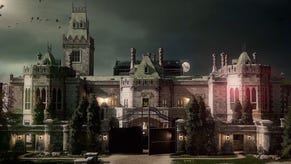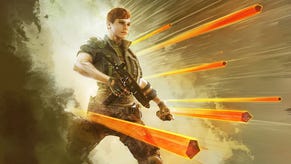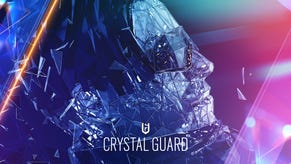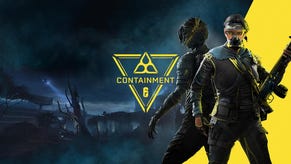Inside Rainbow Six: Siege's Development
Animation Director Scott Mitchell talks about the development and design of the game, the challenges his team faces, and how matchmaking works.
This article first appeared on USgamer, a partner publication of VG247. Some content, such as this article, has been migrated to VG247 for posterity after USgamer's closure - but it has not been edited or further vetted by the VG247 team.
Last week, Ubisoft held a Rainbow Six: Siege preview event, and after playing the game for a good few hours, I sat down with Animation Director, Scott Mitchell, to talk to him about the development of the game.

How did you approach the creation of Rainbow Six: Siege, and what are the fundamentals of the design?
"We started off with the siege gameplay, which is the concept of asymmetrical conflict between attacker and defender, where attackers coming in from the outside don’t necessarily have a lot of intel about what's going on in the inside, and they have to work their way in towards the objective. And you have the defenders who know their surroundings a little bit better, and they fortify themselves inside and they have to defend the wall, if you will, that's between them and their attackers. So one coming in to break through the wall, one defending the wall, and then on top of that having a key objective that's on the inside."
"Then you've got the destruction. That's procedural and extremely precise. Typically in shooters, you don't get destruction that affects gameplay, and for us it's one of the major pillars of the game, meaning that a lot of the game revolves specifically around that. The level design is balanced to work with that. The operators are balanced to work with that. It's a major breakthrough in the games industry in terms of what destruction actually means to the game."
"Then you've got the operators. There are 20 of those in the game, each of them with their own specific device. There are 10 attackers and 10 defenders. What you'll get is an attacker with a device that's specific just to them. And you have a defender that can counter that device. All 20 of them are balanced to work together – which is a huge challenge for sure."
"There's also the concept of one life – if you're shot, you're out for the round, and you don't come back. There's no respawn. It's all about tactics – you really need to be communicating and taking it easy and not rushing in. Because all of our environments are indoors and close-quarters, it really changes the way people are playing shooters. We're really going back to the roots of Rainbow Six, which is that at its core it's a really tactical shooter. One of the best ways for us to enforce the idea that you need to play tactically is to bring everything indoors. You do start outdoors if you're an attacker, but all the objectives are exclusively inside. And you do get a large variety of maps with some larger, and some are smaller like the airplane map, which is super-claustrophobic."
"When holes start getting blown in the walls and everybody's rushing around and people are moving towards their objectives, and it gets extremely tense – which is another one of our key pillars of the game."
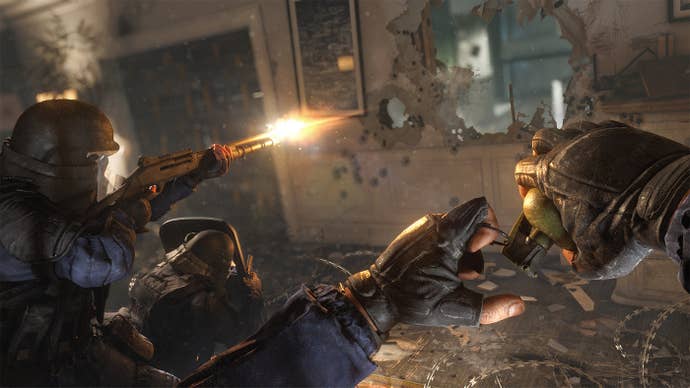
How did you design around the different stages of the game? There's a beginning sequence where you set things up, then there's a longer period when the attackers advance, and then finally the actual firefight that occurs when the attackers penetrate the building.
"It's a huge challenge where multiple departments are involved to try and make sure it works – specifically with the destruction. So everybody works towards supporting the destruction gameplay, and that really affects the level design metrics in a huge way. We do try and respect typical level design metrics for players to make sure characters can maneuver in and around the environments, but now we’re also blowing holes in that environment as well. That has a huge effect on the AI, who will play like a player and they react to the destruction as well."
"When level designers are creating maps, they are aware of the different devices operators are using, and they're also aware of where sight lines are opening up, so they have to be careful where they place structural walls, because you can't destroy structural walls within any of the environments. In terms of windows and doors, they can be barricaded and that's actually part of the fun of the gameplay – when defenders are trying to make sure they barricade themselves into the buildings properly. And that changes between matches, because attackers can come from different sides every time. The idea is to give people options and make sure it's not playable just one way."
So levels randomize each time you play in terms of the placement of objectives?
"Yes. That's correct."

How does that randomization affect level design?
"The team plays every single day. When they're prototyping these maps, they're dropping hostages and bombs in every single place, and testing out the levels and seeing where the best places are to put these things so there's no place that's an exploit, or is unfair. On top of that you have operators with different devices that are entering in different ways, and you have doors, windows and ceilings that can be blown out, so it's difficult for them to pinpoint the right places to put things. So there are limitations where they put the objectives."
"There's a lot of prototyping involved to make sure that the levels are fluid, and that there are plenty of options. Choke points can be set up by the players. They'll come in and barricade in a certain way to create a choke point. Or the attackers will actually break through walls in a certain order, and with things blowing up, defenders will start freaking out because they don't know where everything's coming from. They're coming from the ceiling, or maybe through a wall – and it can make the defenders really discombobulated. A lot of that depends on the player. We give them the tools, and there's a base structure to the building, and they take it from there."
That aspect is quite psychological. Was that designed into the game, or was it more of an accident of design?
"One of the key pillars of Rainbow Six: Siege is tension. I actually have the word written on a post-it note and stuck on my monitor. I did the same thing for the other animators on my team. Every team works towards keeping the content tense, whether it's the way a level is put together, or the timing it takes to activate a device. If you're going to a weapons cabinet to reload, we very carefully plan how long it's going to take so that we're keeping up that level of tension at all times. The game is even tense when you're going through the preparation phase and there are drones zooming around. You're being watched as a defender and you're watching out for those drones, and trying to destroy them. So even though it might be a little slower when everyone starts to advance, everything still plays off that idea that it has to be tense from the start to finish. That's what keeps bringing people back – the tension and the adrenaline rush that you feel."

How does keeping the tension up translate in terms of the AI
"We offer different difficulty levels from normal through hard to realistic. If you play realistic, the game becomes incredibly difficult. The AI is designed to play like a player does. They have access to destruction, so if you're playing as a defender and the AI is playing as an attacker, they can still rappel, and they can break through the barricades. If they're defenders, they can set up barricades and they can protect VIPs and plant bombs, and so on. They're really precise, which gets adjusted by difficulty level."
"We watch players play, and program the AI to behave like them. They also have eyes and ears, so if you fall into their sightline, they'll come after you. Bombers, for example, are really relentless and will keep on coming after you. There are different classes of AI that have different rules. There are engineers that put up barricades, and roamers that go outside of the building to challenge you. There are also ambushers behind deployable shields hiding in corners. So it's really important that you check your corners, just like you would if you're playing in a PvP match."
How did you design the operatives
"The five different major counter-terrorist units are based on real-life CTUs. We have the SAS, Spetsnaz, SWAT, GIGN, and GSG9. Those are the "big five" basically. Their uniforms are based loosely on their real uniforms, but beyond that we want to make sure that they have a silhouette that's subtly different from another CTU. So you'll see common colors – Spetsnaz all have uniforms that are the same camel color, for example. Beyond that, they have different devices and attachments that make them different. The SWAT all wear sunglasses, and most of them have ballcaps instead of helmets. Things like that."
"They are loosely based on the actual CTU, but there's the gameplay element where it's important to give the player a clear sign as to which operative that might be on the other side of the map."

Rainbow Six: Siege is a mostly multiplayer game, but it does have a single-player element to it – called Situations. What's the concept of that mode?
"Situations is our solution to easing players into the game. Helping them understand that tactics and teamwork are super-important, and communication is important. Situations does serve multiple purposes, but the primary reason for it is to help players train for PvE and PvP multiplayer."
"What they offer are cinematics and context – that's where you see Angela Bassett coming in as Six, and her role is to let you know what you're doing. Each of the Situations plays out like its own story, and there's a beginning and an end once you reach your objective. That helps get the player into the game, and give them a little bit of experience playing – but the game is really all about multiplayer and co-op."
Speaking of which – how will matchmaking work, because I imagine it's going to be very important to match up players of the same ability with one another.
"Everybody starts out with a recruit, and you can change the loadouts for a recruit. This is important because if you want somebody who's new to have a good time, you need to give them certain tools. That's why you can change the recruits' loadouts, but not the operators'."
"All the content is available to everybody. So as you play through the game you're unlocking the operators, and you're getting access to them. But we're also paying attention to where peoples' levels are at, and trying to matchmake according to that."
"Our goal is to make sure matchmaking is fair, and that everybody is having fun."
"What is interesting is that you can gain experience and unlock all the operators through any of the different game modes. Whether you're playing PvE or PvP, or you're playing terrorist hunt, you're unlocking content. You don't just have to play one mode to unlock everything. You can just play terrorist hunt, and still unlock all the operators."
In terms of art direction, Rainbow Six: Siege looks hyper-realistic. Is any of it based on real locations?
"The chalet is a throwback to a previous Rainbow map that fans were really verbal about. So that's where the chalet has come from. None of the maps are based on anything real, however. It's fantasy, like any book or film. We follow the Clancy universe, so it's based on the modern day, or slightly into the future. But it still has to be completely believable. So nothing is based specifically on a key location or key event in history."
How do you balance the practical nature of setting up levels with playability and realism.
"It's a big challenge. It's a challenge for animation direction, it's also a challenge for the rest of the art direction, and a challenge for level design. You want to have a good flow through everything, and you want it to look super-realistic. But at the same time you have metrics and gameplay, destruction, the concept of one life, you're trying to open up all the different sight lines, and there's also the 20 operatives. All of these variables make everything very dynamic, but the payoff in terms of replayability is huge. The maps play differently every time. Choose different operators on a map, and it changes it completely."
"Everybody's ultimately focused on the same thing. Yes, we do have constraints, and major challenges of animation and art direction, but because everyone's focused on the same goal, it's a good challenge for us."

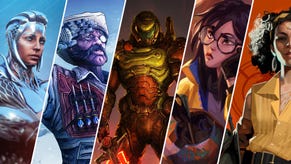
.jpg?width=291&height=164&fit=crop&quality=80&format=jpg&auto=webp)
